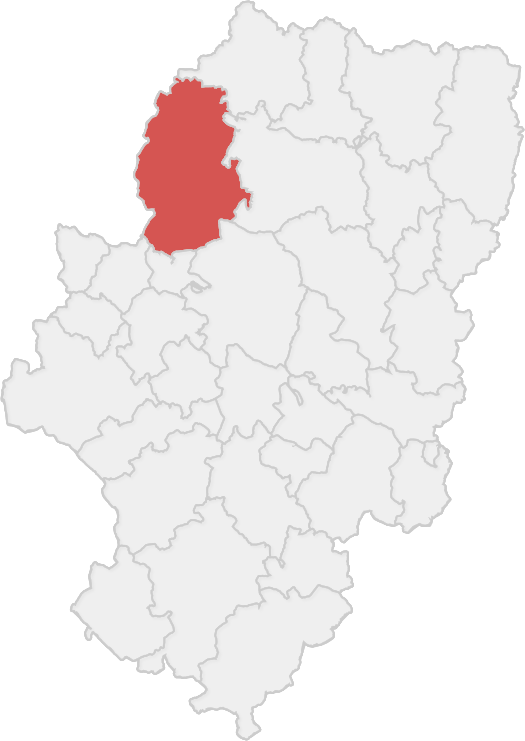Travel trought history
“Las Altas Cinco Villas” region represents one of the most beautiful territories of the legendary part of Old Aragon. A land where Cultural tours stand out as the most interesting way to get to know each and every one of its historical corners.
Las Altas Cinco Villas
Cinco Villas is made up by five small towns Ejea, Tauste, Sádaba, Sos del Rey Católico and Uncastillo. Naturally these last two, spring to mind immediately because they are the most charming, picturesque and historic towns.
Cinco Villas Region is renowned for its history forged during the passage of time between castles, walls, temples and other constructions. Today, this region and first of all, Sos And Uncastillo, represent two top- rated tourist attractions in the entire autonomous community. Both are designated historic-artistic sites due to its charming alleys. Strolling through these towns is an ideal adventure to know the vivid history of this territory.
To the architectural richness and the stunning cultural heritage, we must add the natural heritage, especially its natural, genetic and scenic diversity that pervades all the corners.
These great incentives make of Las Cinco Villas a space requested permanently by tourists in search of adventure, history or simply calm. And to this end, its accommodation offer caters to all needs.
These “three villas” live up to the noble and glorious past that minstrels, clerics and kings from centuries ago.
Through A-127
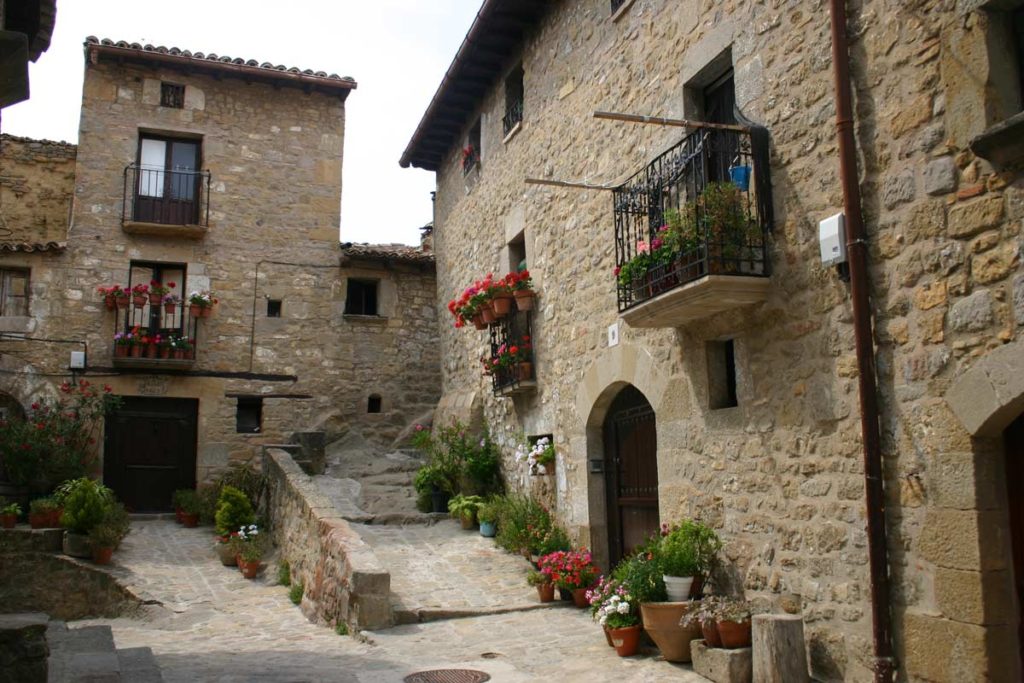
Taking as a reference the A-127, the road that crosses Cinco Villas close to the Arba and Riguel rivers, soon we arrive from Tauste to Ejea and from there to Sádaba, one of the three localities in the high area of this historic region
Next to it, the road that departs towards Uncastillo (A-1202) leaves in its right margin three religious constructions so advisable as to make a stop in the way. They are la Virgen de la Leche, San Julián de la Caridad and Nuestra Señora de Loreto.
And, in Sádaba, the A-127 goes up to Sos del Rey Católico, so our trip through the Cinco Villas can take as a starting point this first town. Also, during this tour, we will not overlook the castle of Barués.
These and other tourist attractions can serve as a one-day getaway touring the historic past of these lands. Don’t forget that from Zaragoza, in just 100 kilometers, we landed in this region.
But this historical and cultural journey can be extended to other parts of Cinco Villas. For example, Luesia, a small village located in the foothills of the Peñas de Santo Domingo, shows several churches and Romanesque heritages, while its neighboring town, Biel, displays an impressive monumental complex with its church. The municipality of El Frago renowned by history and Nature merge, resulting in an ideal place to look at both churches and heritages, as well as paths between poplars and a good number of reptiles, birds and mammals. Evidently, there are other idyllic places in these lands. But traveler´s preferences marks the route to follow.
Villages and towns
- Bagüés
- Biel
- Castiliscar
- El Frago
- Isuerre
- Lobera de Onsella
- Longás
- Navardún
- Los Pintanos
- Sádaba
- Sos del Rey Católico
- Uncastillo
- Undués de Lerda
- Urriés
Art and history in Sádaba
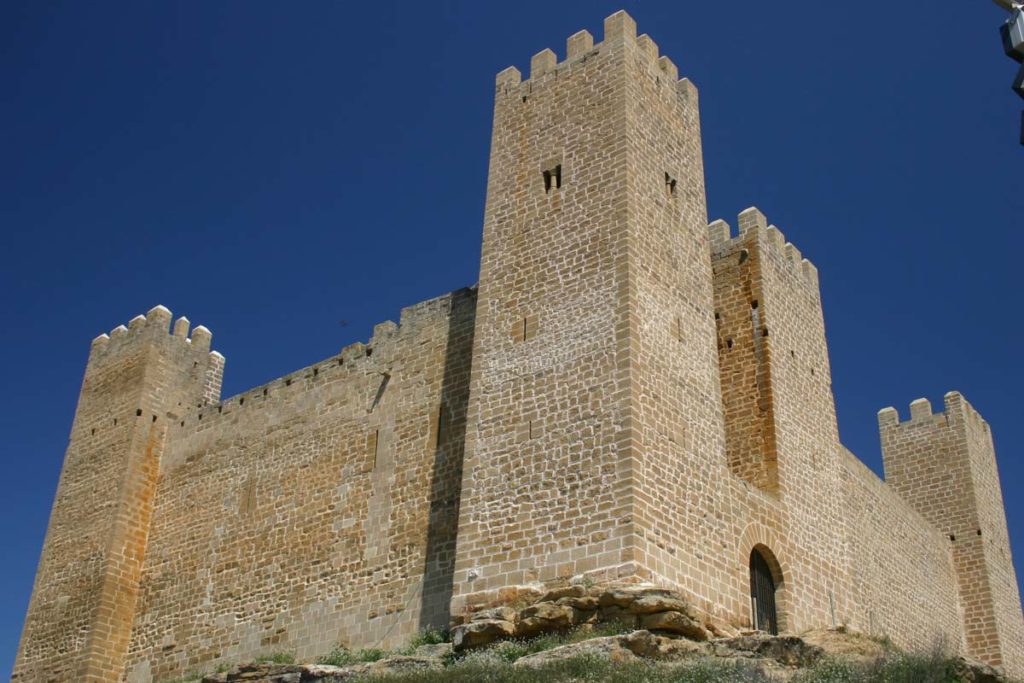
This town, divided by the channel of Riguel, has one of the most important Roman archaeological ensembles of those who settle in Aragon. On the one hand, there is the mausoleum of the Atilios, which is located two kilometres from the town and dating from the time of the Severes (193-235 A.D.). And on the other hand, Sádaba also conserves “the synagogue”, as is known this Roman mausoleum dated to the end of the 4th century A.D.
Another must- see place is the dramatic castle (dated 12th century) that symbolizes and characterizes Sádaba. From the high rocky in which it rises, this building keeps intact its original physiognomy with the rectangular enclosure and the seven imposing towers that safeguard it. The church of Santa Maria, a magnificent sample of the Gothic-Levantine style, the monastery of Puylampa, a convent that served as a guide for all pilgrims and that today only conserves the church, and the monastery la Concepción de la Virgen de Cambrón, located on the outskirts of Sádaba, are the greatest exponents of the history, art and culture of this town. Visitors can wander along this town and be sent into the past in a time-travel from classical Rome to the Middle Ages.
Getting Yesa
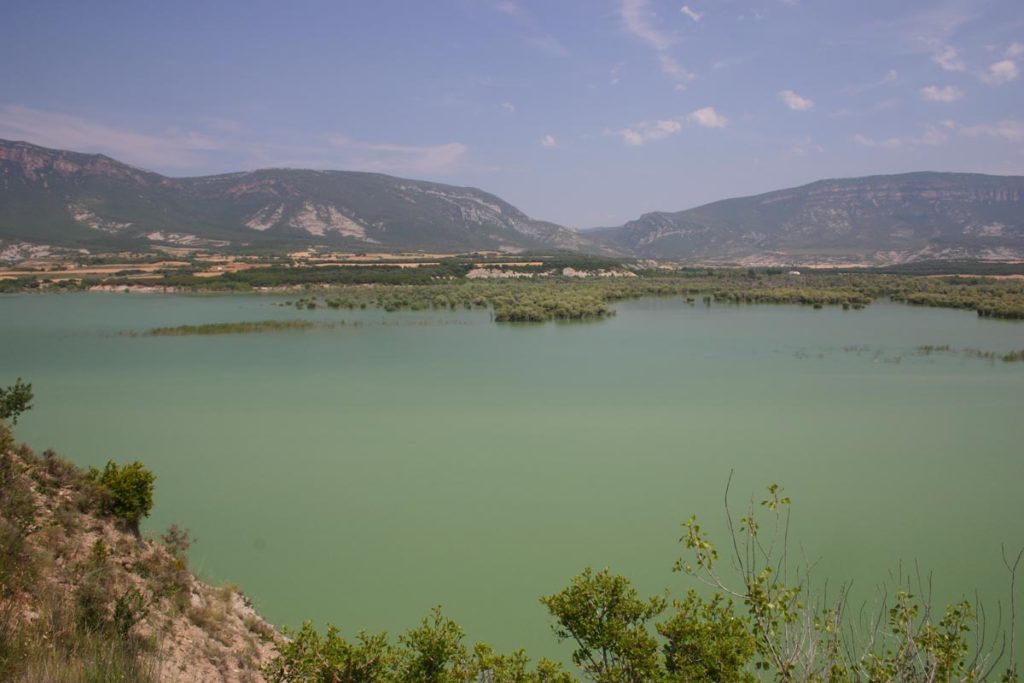
The Yesa Reservoir represents one of the most natural points of interest of Cinco Villas, along with the Sierra de Santo Domingo and the Luesia, both (Mountains range). Tourist attratctions include to both aquatic activities, as well as leisure centre or natural space.
From the municipality of Mianos, to that of Undués de Lerda, the stage on The Camino De Santiago Pilgrimage Route that crosses the five Villas runs parallel to the reservoir. It has motivated an important tourist boom with the equivalent growth of services demanded.
When returning, do not miss the detail of the mountains of La Sarda or the hidden tiny populations. It is worth stopping at Navardún, Urriés, Longás and other beautiful places.
Adventure next to the reservoir
The Ruesta Hostel proposes countless activities to do in the surroundings of the reservoir. The facilities available, which are part of the resort of Ruesta, have camping and shelter to accommodate pilgrims of The Camino De Santiago Pilgrimage Route
Sos del Rey Católico Living History
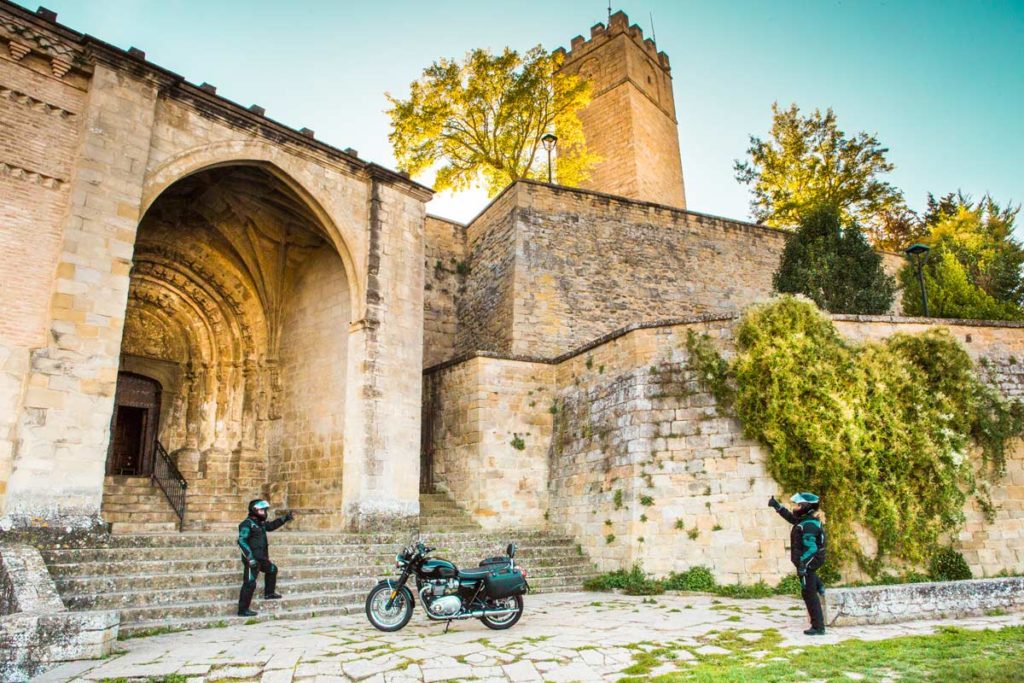
The covering letter of Sos, which proudly bears to be the birthplace of Ferdinand the Catholic, is focused on the urban area. A detailed collection of medieval streets and monuments with different architectural styles, mainly Romanesque and Gothic can be found there. A large part of these alleys leads to the castle where the Aragonese monarch was born and tour other places of impressive artistic richness. These cultural resources have made Sos a designated historical ensemble.
No tourist itinerary to here would be complete without a visit to the following ancient monuments: San Esteban´s church, inside which is kept the crypt of La Virgen del Perdón, the Romanesque hermitage of Santa Lucía, known before as the Church of San Miguel Archangel, the Church of San Martín de Tours, private Chapel of the palace of the Sada family, or the monastery of Monasterio de Nuestra Señora de Valentuñana, formely known as Entrembasaguas. The 16th century town Hall will not have to be forgotten, as well as other notable buildings with nobility titles, as a result of its splendid past.
The Solemnity of Uncastillo
The figures attest to the facts of an ancient past of this village of military origin. The old UnumCastrum It has six Romanesque churches with one of the best Romanesque ensembles in Spain, a Renaissance church, twelve palace houses, a 16th town hall, castles, necropolis of different eras and cultures, an intact Jewish quarter and the Medieval urban complex that unites all these buildings. And so, it is not surprising that, in June 1966, Uncastillo was designated as Cultural interest site. Uncastillo is rooted in history and ancient culture.
Tower Museum
“La Torre del Homenaje” (keep) is a symbol and emblem of the village of Uncastillo, originally from the 11th century and restored in the 14th, where you will find the Tower Museum since 2001. It was opened by the foundation Uncastillo as Center of the Romanesque. In all this space, there is a nice little museum in the keep and you can climb up on the top of the keep. Visit it is an attractive journey through the Middle Ages through models, reproductions, audiovisuals resources and guided by skilled staff. Do not miss the panoramic view from the top of the tower which is magnificent.
Churches, towers, porches and altars
The churches of Santa Maria and San Juan have in common to have been designated as Cultural Property and to be faithful to the Romanesque style that dominates throughout the locality. But the latter is the only one that has a cross plant.
The temple dedicated to San Miguel, also Romanesque of the 12th century was sold by the Diocese of Jaca in 1914 to the Museum of Boston and its cover is now in the American city. It currently hosts the foundation’s headquarters Uncastillo Center of the Romanesque.
San Martín de Tours hosts many exhibitions of movable art, highlighting altarpieces, Ashlars and goldsmiths. Today it houses an interpretation center of religious art of the pre-Pyrenees and it is also a tourist office.
Other religious buildings that exalt Uncastillo, they are the Church of San Felices and that of San Andrés.

Other places of interest
Of all of them, the town hall built during the 16th century stands out, as well as the Roman site of the Bañales, the towers of Sibirana and a tower that was part of the keep, today practically run down.
Excursions Near Las Cinco Villas
In addition to the innate charm that this land possesses, its strategic location makes it easy to do nearby excursions outside this region but entirely accessible to enjoy a family day out.
Castle of Javier
Not far away from Sos del Rey Católico (Just 19 kilometres, towards Sangüesa), is the resplendent castle of Javier, a beautiful place surrounded by nature in which stands this magnificent fortress the birthplace of San Francisco Javier (St Francis Xavier), patron saint of Navarre, religious missions and tourism in Spain.
Once you have crossed the drawbridge three access doors and enter a world of towers, dungeons, machicolations, embrasures and arrow slits, the traveler arrives to the arms court, the first stop point. In this space there is no need to lose detail of the dungeon, the well and the Torre del Homenaje (keep). At the end of the courtyard we reach the old staircase from which you can contemplate the wall of the basilica, built in the late nineteenth century. The visit goes on along the castle just at the end of the staircase where the iron postern gate is lifted, previously the entrance to the interior. Cross it to access the Torre del Santo Cristo and notice its magnificent chapel of the same name, the place of greatest veneration of the whole building.
The door opposite the chapel, in the middle of the alley, leads to the oldest part of the castle, which is formed by the Holy Room, the room occupied by Francisco Javier, and the chapel of San Miguel.
Trough the inner alley that leaves the chapel, going up the stairs on the left, we will reach the chaplain’s room, the place where the chaplains and servants of the castle lived, and that today houses the Museum of Sacred Art. From this room, by the narrow staircase, we go up to the terrace, from which a spectacular panorama is contemplated.
The Matacan floor, the defense from which boiling oil was poured and stones to stop the external attacks, is next to the terrace surrounded by covered battlements. And ongoing down the stairs, we reach the main hall of the castle, the home and the kitchen where much of the life in the castle took place. From this point, we can continue towards the art gallery or, on the contrary, reach the winery or the stables. These are the last two sights that conclude what would be a common visit to the Castle of Javier.
To visit every one of its corners is to relive the history of one of the most attractive points of those that exist in the vicinity of Cinco Villas Region. Do not forget that Sos del Rey Católico is at the same distance from both Castillo de Javier and of Uncastillo.
Monastery of Leyre
Another of the typical excursions from Las Cinco Villas, crossing the Navarre border, is the one that leads to the monastery of Leyre located 28 kilometres from Sos of the Catholic king.
The abbey is in the “Sierra de Errando” (mountain range) descending to merge with the reservoir of Yesa. The views from the monastery allow us to observe the mountains of Sos And of Jaca, as well as the chains of mounds which separate the valleys of Valdoncella, Javier and Aragon. But this geographical setting is only a prelude to the wealth that the walls of this monastery encloses.
The first area of the visit are the apses and the tower, two spaces in which a compendium of harmoniously assembled styles are combined. The three Romanesque exterior apses surprise by the size and for being well preserved, as well as by the absence of columns that sustain them and by the non-existent capitals. The tower, nevertheless, brings with its quadrangular silhouette a certain nuance to the fortress before the abbey.
The door closest to the apse reaches the inner hall where the front of the crypt reflects the Romanesque legacy and in which the forest of columns carved in stone shows an endless number of capitals and geometric shapes.
Upon leaving the crypt, a front staircase leads us to the medieval monastery, the old part built during the 9th and 11th centuries. From this area the northen canvas is preserved and in it the primitive cover. However, in the northeast angle stands a square tower and the monastic hostelry. Also, from the patio you can contemplate the north wall of the church.
But it is the church that is one of the most impressive parts of Leyre. The main portico, the Porta Speciosa, is a sensational example of the art that traveled the Camino de Santiago pilgrimate route even to remember the door of the Platerías. And inside the temple, its architecture seduces by sobriety and balance. We will not lose detail of the Romanesque headboard, the side aisles or the Gothic vault.
Inside the Monastery of Leyre, life has been parallel to the liturgy, research studies and Gregorian chants by the Benedictine monks. And of course, all this is attractive enough to visit this Romanesque jewel.
Gastronomy
“Ternasco de Aragon” (roasted lamb), Rancho de Uncastillo (kind of paella), Pollo al Chilindrón (chicken), “Conejo escabechado” (pickled rabbit meat) and some sweets, among which the medieval cakes stand out, make up some of the classic dishes that are made in both public and private kitchens of the Cinco Villas Region.
As it is a tourism destination, its catering offer is wide and varied. They lead the places that offer a popular gastronomy with traditional dishes within the classic Aragonese recipes and others that go further by updating recipes and proposals. In any case, most restaurants in the area pay special attention to affordable and seasonal menus of the day.
But apart from restaurants, what Cinco Villas owns is a magnificent network of food shops and producing companies that produce a tasty variety of products. In all of them you will find what article you are looking for: a delicious souvenir.
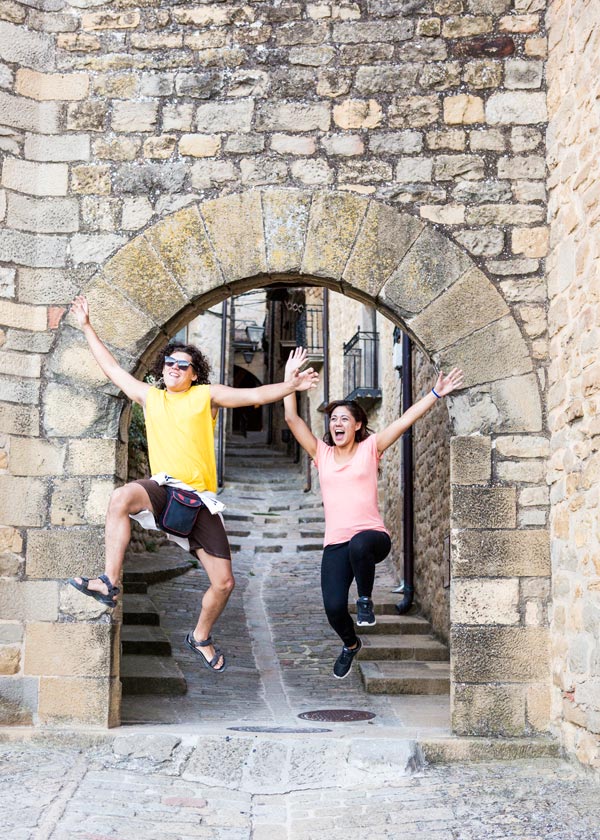
Between fortress
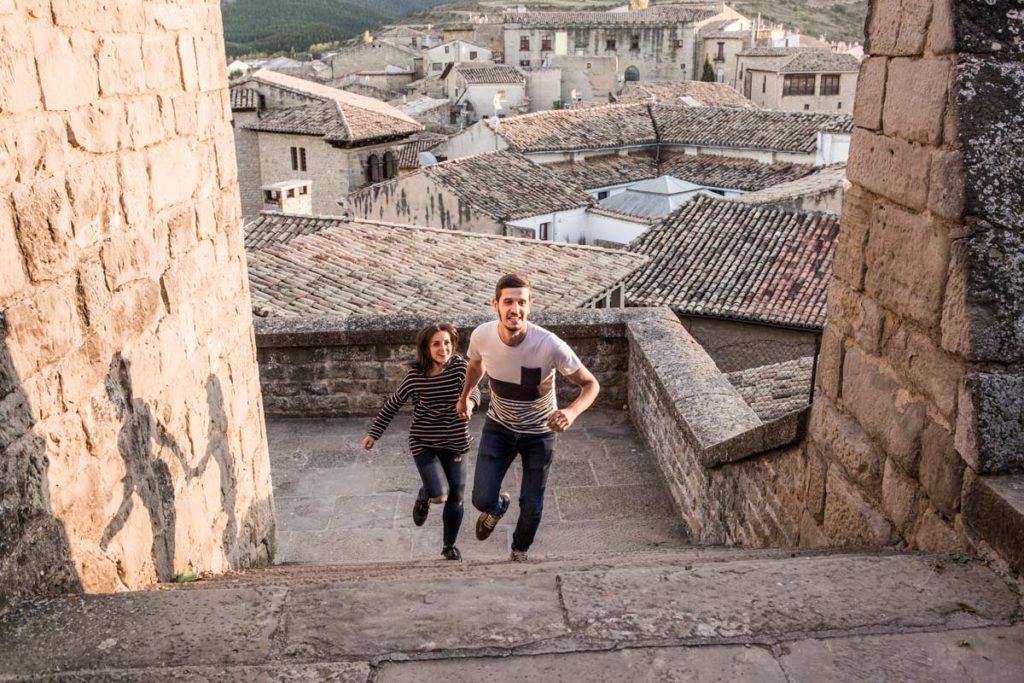
The symbol of Cinco Villas, its most valuable standard, comes from many architectural constructions that are spread throughout its territory. And of all of them, the castles have been the testimonial emblem. Many tourists converge in these lands to get to know the medieval legacy of its towers, ramparts and fortifications. A tour of all of them is a fantastic experience.
One of the most representative is the Uncastillo, which is why the locality takes a name previously UnuhQastil, UnumCastrum and then Castello.
The Castle of Sos Along with its ramparts, it dominates all the surrounding area and forms a fortified place. Sádaba possesses one of the most fascinating castles of Aragon that occupies an area of more than a thousand square meters. From another part, we will find Biel with an impressive example of tower-Residence, Biota and its tower to which was added a baroque palace, Luesia And Sibirana with two imposing towers, and Navardún, with one of the most lavish towers of the Cinco Villas.
By water, land and air
Countless outdoor sport activities can be practiced in these lands. Beginning with the aquatic disciplines, the reservoir of Yesa monopolizes all the sights of nautical lovers. There you can practice sailing, windsurfing, rowing and waterskiing, among others.
Regarding excursions and rides, the GR 1 (Grand route) route from Biel to Puig Moné and goes down to Sos Del Rey Católico, where it connects with the GR 23. All these routes are perfectly signposted to avoid unexpected surprises. But undoubtedly the most representative is the Camino de Santiago Pilgrimate Route (GR 65.3) that runs parallel to the reservoir of Yesa and go on towards Sangüesa.
If we do not want to go on foot, we can do mountain biking on the roads that cross the Sierra de Santo Domingo, or the mountains of Castejón. In this last part, there are also signposted routes and they require less effort and preparation than those of Santo Domingo. By bike, we will be able to admire castles and hermitages located in the middle of sensational landscapes.
Finally, for lovers of aerial sports, the Peñas de Santo Domingo in Lobera de Onsella and the Sanctuary of Monlora, in Luna, represent one of the best places to practice paragliding in the province of Zaragoza. A whole world of sensations of water, earth and air.
Rural Tourism
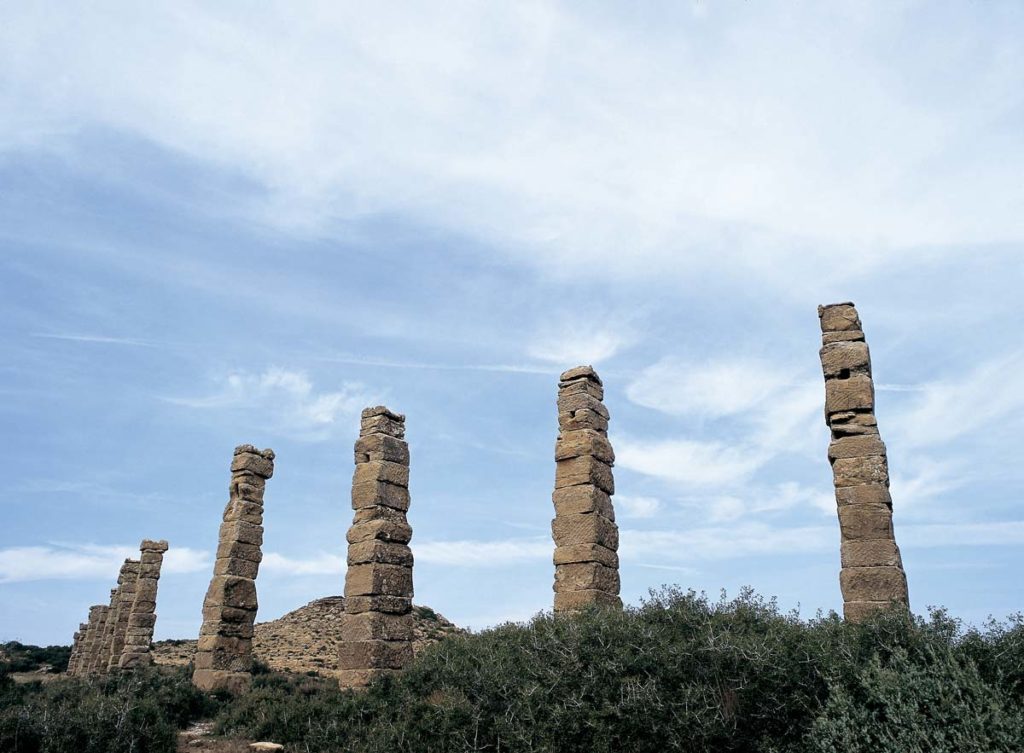
Without any doubt It is the most demanded kind of tourism nowadays in the region. However, it does not mean that there was no other accomodation offer. The Parador de Turismo de Sos Del Rey Católico or small charming hotels are added to a list of alternatives highlighted by rural housing.
Experience the best of rural Cinco Villas and relax in comfortable and homely accommodation at an old mansion rehabilitated and today turned into accomodation for all needs.
Without a doubt an attractive temptation to spend a season at lower prices than those offered by other tourist establishments.
